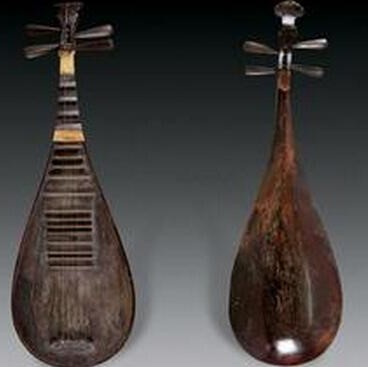chiboue overview
 Qibue (pinyin: qí bù è) is a plucked stringed musical instrument of the Lisu people. It is popular in Fugong, Bijiang, Lanping, Lushui, Diqing Tibetan Autonomous Prefecture, Tengchong in Baoshan, and Longling, Dehong Dai and Jingpo Autonomous Prefecture in Yunnan Province.
Qibue (pinyin: qí bù è) is a plucked stringed musical instrument of the Lisu people. It is popular in Fugong, Bijiang, Lanping, Lushui, Diqing Tibetan Autonomous Prefecture, Tengchong in Baoshan, and Longling, Dehong Dai and Jingpo Autonomous Prefecture in Yunnan Province.In Lisu language, "Qi" means string, and "Buer" is Liguo, which means cylindrical string. Also known as Qi Bo, Qi Bai, Qi Ben, etc. The Han people call it the Lisu Pipa.
There are various shapes, and there are significant differences in different regions, and the shape is similar to the pipa of the Dong nationality. The body of the piano is mostly made of a whole piece of locally produced safflower cherry wood, azalea, nanmu, mulberry, red toon, catalpa or other hard woods, and consists of a resonance box, headstock, piano rod, peg, bridge and strings. composed of other parts.
When playing the boue, you can take a standing or sitting position, put the strap on your left shoulder, hang the body diagonally on your chest, place the case on your right belly, tilt the head to the upper left, and support the stem with your left hand. The index finger and middle finger are used to press the strings, and the ring finger and little finger are also occasionally used. It is often used for solo, unison, ensemble or as folk song and dance accompaniment. Both men and women can play, and can sing or dance while playing.
overview of other similar instruments
- sanyanxiao overview
- Daguangxian overview
- Leiqin overview
- hahao overview
- yandundagu overview
- Han Xiaozheng overview
- Fang Xiang overview
- guanzi overview
- zhuqin (Dao Qin) overview
- zhuiqin overview
- bangzi overview
- three-stringed piano overview
- Gehu overview
- xiao overview
- xiaokonghou overview
- Konghou overview
- Sheng overview
- suona overview
- hulusi overview
- gushao overview
 渝公网安备 50010702504639号
渝公网安备 50010702504639号